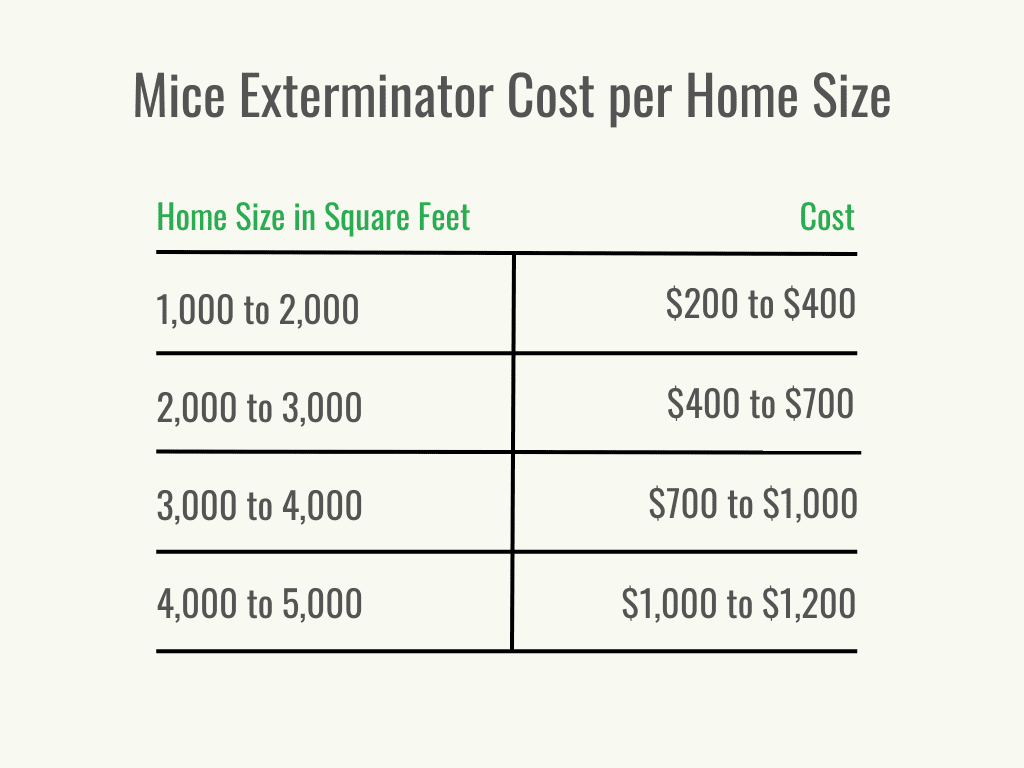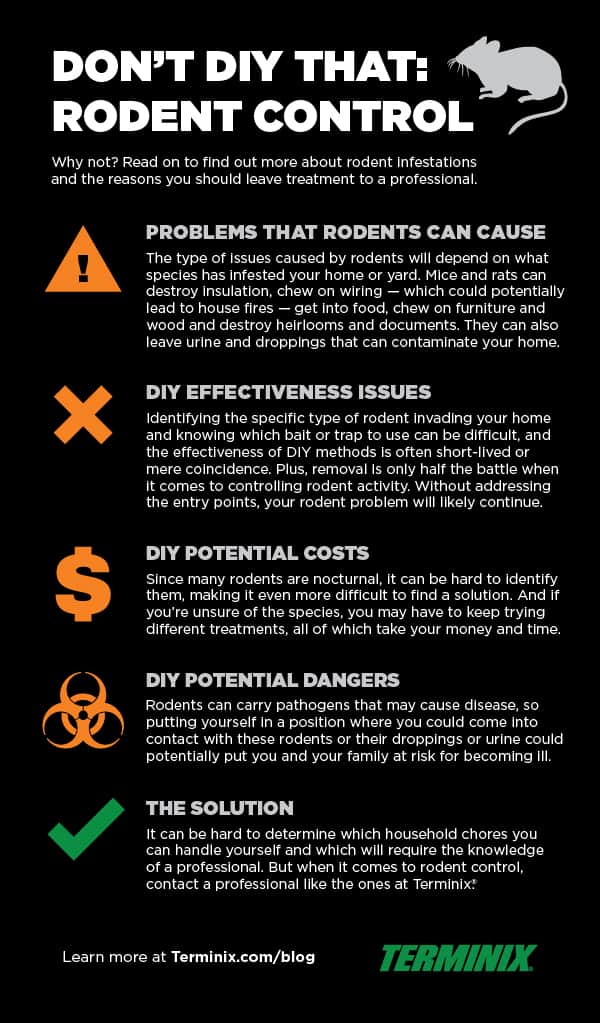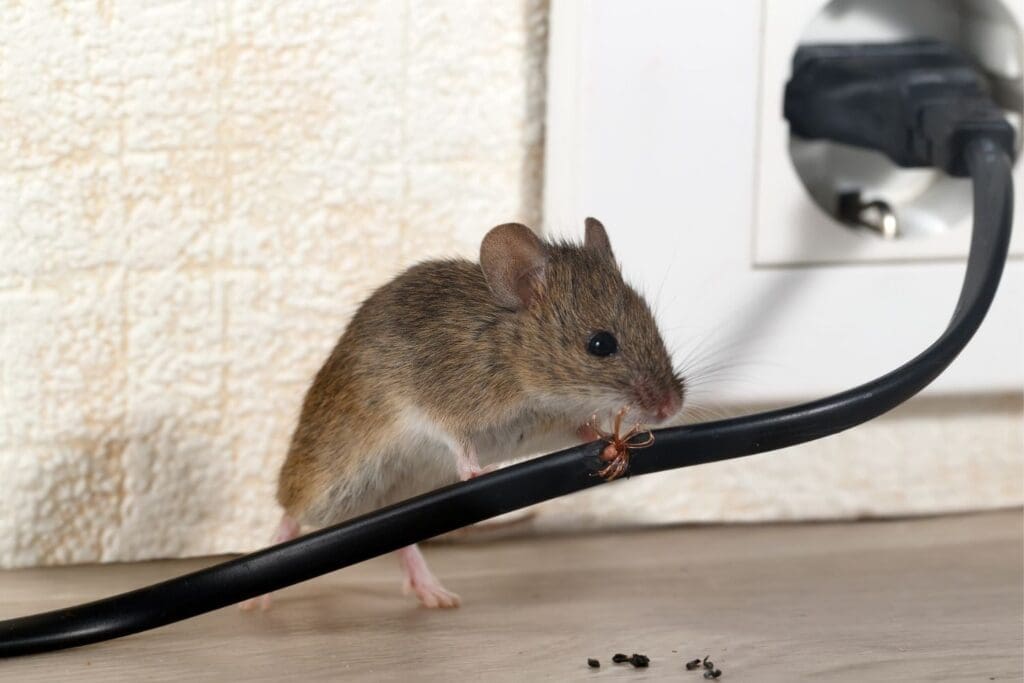In this informative article, we will explore the world of pest control for mice, covering everything from costs to methods and tips. Whether you’re dealing with a minor mouse problem or a full-blown infestation, we’ve got you covered. You’ll discover effective yet affordable ways to tackle these pesky critters, along with expert advice on preventative measures to keep them at bay. So, if you’re ready to bid farewell to those unwanted house guests, keep reading for all the essential information you need.

Costs of Pest Control for Mice
Pest control for mice can be a necessary and sometimes costly endeavor. Whether you choose to hire professional pest control services or opt for do-it-yourself methods, understanding the costs involved is essential. In this article, we will explore both professional and DIY methods, factors that affect costs, and provide a cost comparison between the two. Additionally, we will discuss the importance of prevention and timely intervention, as well as consider safe and humane pest control methods.
Professional Pest Control Methods
Inspection and Assessment
When you hire a professional pest control service for mouse infestations, the first step they will take is to conduct a thorough inspection and assessment of your property. This step helps to identify the extent of the infestation, the entry points utilized by the mice, and any potential risk factors. The cost of this initial inspection can vary depending on the size of your home or property and the expertise of the pest control company.
Trapping
Trapping is one of the most common methods employed by professional pest control services to eliminate mice infestations. They will strategically place traps in areas where mice are likely to travel, such as along walls and near entry points. The cost of trapping services can depend on the number of traps needed and the duration of the trapping process.
Baiting
In addition to trapping, baiting is another effective method used by professionals to control mice infestations. Poison baits are placed in bait stations, which mice are attracted to and consume. The cost of baiting services can vary depending on the number of bait stations required and the type of bait used.
Exclusion Methods
Exclusion methods involve sealing off entry points and potential access areas where mice can enter your property. This can include sealing cracks and gaps in walls, floors, and foundations, as well as installing door sweeps and mesh screens. The cost of exclusion methods will depend on the extent of the necessary repairs and materials needed.
Use of Repellents
Professional pest control services may also utilize repellents to deter mice from entering or remaining in your property. These repellents can come in the form of sprays, powders, or electronic devices that emit ultrasonic sounds. The cost of using repellents will depend on the specific product and the size of the area that needs to be treated.
Follow-up and Monitoring
After implementing pest control measures, professional services often provide follow-up visits and monitoring to ensure the effectiveness of the treatment. These visits may include additional trapping or baiting if necessary. The cost of follow-up and monitoring services can vary depending on the frequency and duration required to completely eliminate the infestation.

DIY Pest Control Methods
If you prefer a more hands-on approach or want to save on costs, you may consider tackling the mice infestation yourself. However, it is important to note that professional pest control services are typically more effective, especially for larger or more severe infestations. Here are some common DIY pest control methods for mice:
Sealing Entry Points
One of the first steps in DIY pest control is sealing off the entry points that mice can use to access your property. This can include inspecting your home for cracks, gaps, and vents that need to be sealed. Supplies such as caulking, weatherstripping, and metal mesh can be used to block these entryways. The cost of DIY sealing materials will depend on the size of your property and the extent of the repairs needed.
Setting up Traps
Traps are a popular and cost-effective DIY method for catching mice. There are various types of traps available, such as snap traps, glue traps, and live-catch traps. The cost of traps will depend on the type and quantity needed. It is important to properly set up and position the traps in areas where mice are most active to maximize effectiveness.
Using Rodenticides
Rodenticides, or mouse poisons, can be purchased for DIY pest control. These products are designed to be placed in areas where mice frequent, such as along walls and near entry points. It is crucial to follow the instructions and precautions provided by the manufacturer when using rodenticides. The cost of rodenticides will depend on the brand and quantity needed.
Natural and Homemade Repellents
For those who prefer natural or homemade solutions, there are several options available for deterring mice. These can include using essential oils, such as peppermint or eucalyptus, placing mothballs in areas mice frequent, or using vinegar or ammonia solutions to create unpleasant odors. The cost of natural and homemade repellents will vary depending on the specific ingredients and supplies used.
Sanitation and Cleanliness
Maintaining a clean and sanitary environment is essential for preventing and controlling mice infestations. Regularly cleaning up food crumbs, properly storing food in sealed containers, and promptly disposing of waste can help deter mice from entering your property. The cost of implementing good sanitation and cleanliness practices will depend on your existing household supplies and cleaning routine.
Factors to Consider for Effective Pest Control
When deciding between professional pest control services or DIY methods, there are several factors that you should consider to ensure effective and long-lasting results. These factors include:
Identifying Signs of Infestation
Before implementing any pest control methods, it is crucial to correctly identify the signs of a mouse infestation. Look for droppings, gnaw marks, and damage to furniture or structures. Identifying the signs can help you determine the severity of the infestation and choose appropriate control methods.
Understanding Mice Behavior and Habitat
To effectively control mice, it is important to understand their behavior and habitat. Mice are nocturnal creatures that are attracted to food sources and seek shelter in warm and cozy spaces. Understanding their habits can help you target your pest control efforts more effectively.
Determining the Severity of the Infestation
The severity of the mouse infestation will influence the choice between professional or DIY pest control methods. Larger infestations or recurring problems may require professional intervention, while smaller infestations can often be managed using DIY methods.
Considering the Presence of Pets and Children
If you have pets or young children in your home, it is crucial to choose pest control methods that are safe for them. Some chemicals or products used for pest control may pose a risk to their health. It is important to carefully read and follow all instructions and consider non-toxic or natural alternatives if necessary.
Choosing the Right Products and Methods
choosing the right products and methods for pest control is essential for effective results. Researching and selecting reputable brands that are known for their efficacy can save you time, money, and frustration. Consider reading customer reviews, seeking recommendations, and consulting with professionals for guidance.

Prevention and Exclusion Techniques
Preventing mice from entering your property in the first place is often the most effective method of pest control. By implementing prevention and exclusion techniques, you can minimize the risk of infestation. Some preventive measures include:
Sealing Cracks and Gaps
Sealing off cracks and gaps in walls, floors, and foundations is one of the most important steps in mouse prevention. Mice can squeeze through incredibly small spaces, so it is essential to be thorough. Use sealing materials such as caulk, foam, or steel wool to block off these entry points.
Installing Door Sweeps
Door sweeps are an effective way to prevent mice from entering your home through gaps beneath doors. These sweeps create a barrier that mice cannot easily pass through. Door sweeps are readily available at hardware stores and can be installed easily.
Trimming Vegetation Near Structures
Mice are excellent climbers and can gain access to your property by climbing up trees, shrubs, or vines touching your home. By trimming vegetation and maintaining a clear space between your property and nearby vegetation, you can reduce the risk of mice finding their way into your home.
Properly Storing Food and Waste
Mice are attracted to food sources, so it is crucial to store food properly to prevent access. Use airtight containers to store food, clean up spills promptly, and dispose of waste in sealed bins. By limiting the availability of food, you can make your property less attractive to mice.
Maintaining Cleanliness and Hygiene
Regular cleaning and proper hygiene can go a long way in preventing mice infestations. Mice are attracted to dirty and cluttered environments. By keeping your home clean, regularly sweeping or vacuuming, and properly disposing of waste, you can make it less appealing to mice.
Health Risks Associated with Mice Infestations
Mice infestations can pose serious health risks to humans. It is important to be aware of these risks and take appropriate measures to prevent and control infestations. Some health risks associated with mice infestations include:
Diseases Transmitted by Mice
Mice can carry various diseases, some of which can be transmitted to humans through direct contact or exposure to their droppings, urine, or saliva. These diseases can include Hantavirus, Salmonella, and Leptospirosis. It is important to handle mice infestations carefully and seek medical attention if needed.
Allergies and Respiratory Issues
Mice droppings and urine can also trigger allergies and respiratory issues in some individuals. These allergens can become airborne and cause symptoms such as sneezing, coughing, and wheezing. People with pre-existing respiratory conditions should be particularly cautious in the presence of mice infestations.
Contamination of Food and Surfaces
Mice are known for their ability to contaminate food sources and surfaces with their droppings, urine, and hair. This can lead to foodborne illnesses and pose a risk to human health. Proper food storage and cleanliness practices are essential to prevent contamination.
Property Damage Caused by Gnawing
Mice have a constant need to gnaw in order to keep their teeth sharp and prevent them from overgrowing. Unfortunately, this can result in damage to structures, furniture, insulation, and electrical wires in your home. Not only does this cause costly repairs but it can also increase the risk of fires due to exposed wiring.

Tips for Choosing a Professional Pest Control Service
If you decide to enlist the help of a professional pest control service, it is important to choose a reputable company. Here are some tips to help you make an informed decision:
Researching Reputable Companies
Start by conducting thorough research on different pest control companies in your area. Look for companies that have a strong reputation and positive reviews from past customers. This can be done by checking online review platforms or asking for recommendations from friends, family, or neighbors.
Checking for Licenses and Certifications
Ensure that the pest control company you choose holds the necessary licenses and certifications required in your area. These certifications indicate that the company meets the industry standards and has the expertise to handle pest control in a safe and effective manner.
Reading Customer Reviews and Testimonials
Reviews and testimonials from previous customers can provide valuable insights into the quality of service provided by a pest control company. Take the time to read reviews and testimonials on reputable platforms. Pay attention to feedback regarding customer service, effectiveness of treatments, and overall satisfaction.
Comparing Prices and Services
Obtain quotes from multiple pest control companies and compare their prices and services. It is important to note that the cheapest option may not always be the best choice. Consider the reputation of the company, the effectiveness of their treatments, and the value they provide for the price.
Inquiring About Guarantees and Warranties
Ask the pest control companies about any guarantees or warranties they offer for their services. A reputable company should be confident enough in their treatments to offer some form of guarantee. This can provide you with peace of mind knowing that they are committed to resolving the issue.
Safe and Humane Pest Control Methods
For those who prioritize the safety and well-being of animals, there are safe and humane pest control methods available. These methods aim to eliminate mice infestations without causing harm to the animals. Some safe and humane pest control methods for mice include:
Humane Traps and Catch and Release Methods
Humane traps are designed to capture mice without causing harm. These traps allow you to safely release the mice back into their natural habitat away from your property. They are typically designed with one-way doors or mechanisms that prevent the mice from escaping once captured.
Using Non-Toxic Deterrents
Non-toxic deterrents can be utilized to discourage mice from entering your property. These deterrents can include natural substances like peppermint oil, which mice find unpleasant. Non-toxic deterrents are safe for humans and pets, making them an ideal choice for those who are concerned about using chemicals.
Natural-Based Repellents
Natural-based repellents can be effective at deterring mice from entering your property. These repellents often utilize ingredients such as garlic, vinegar, or chili peppers to create odors or taste aversions that mice find unpleasant. Natural-based repellents are safe for humans and pets and can be easily made at home.
Ultrasonic Devices
Ultrasonic devices emit high-frequency sounds that are designed to repel mice without being audible to humans or pets. These devices are non-toxic and safe for use around the home. Ultrasonic devices can be an effective method for deterring mice, but their success may vary depending on the specific product and individual circumstances.
Preventive Measures
Implementing preventive measures can also be considered safe and humane pest control methods. By sealing off entry points, maintaining cleanliness, and properly storing food, you can make your property less attractive to mice and prevent infestations from occurring in the first place.

Product Reviews: Best Pest Control Products for Mice
Now that we have explored both professional and DIY pest control methods, it’s important to mention some of the best pest control products available for effectively eliminating mice infestations. These products have been highly rated by customers and are known for their effectiveness. Some popular pest control products for mice include:
Traditional Traps and Baits
Traditional snap traps and glue traps are widely used to catch and eliminate mice. Brands such as Victor, Tomcat, and d-CON offer various types of traps and baits that have proven to be effective. These products are readily available both online and in stores.
Electronic Mouse Repellers
Electronic mouse repellers emit ultrasonic sounds that are designed to repel mice. Brands such as Riddex and Pest Soldier offer electronic repellers that can be plugged into electrical outlets. These repellers are safe for humans and pets and can cover a significant area.
Rodenticides
Rodenticides are available in various forms, such as pellets, blocks, or baits. Products like D-CON and Tomcat offer rodenticides that are designed to attract and eliminate mice. It is important to use rodenticides with caution and follow the instructions provided by the manufacturer.
Rodent-Proofing Materials
To prevent mice from entering your property, rodent-proofing materials can be used. Brands such as Xcluder and Copper Mesh offer materials that are specifically designed to block off entry points and prevent mice from gaining access. These materials are durable and long-lasting.
Humane Catch and Release Traps
For those who prefer a humane approach, catch and release traps are available. Brands such as Havahart and Authenzo offer traps that are designed to capture mice without causing harm. These traps allow you to safely release the mice back into their natural habitat.
Conclusion
Pest control for mice is an important aspect of maintaining a clean and safe home or property. Whether you choose professional pest control services or opt for do-it-yourself methods, there are various factors to consider. We have explored the costs associated with both approaches, as well as the different methods available for effective pest control. Additionally, we discussed the importance of prevention, safe and humane methods, and provided a list of recommended products. By understanding the costs, methods, and tips provided in this article, you can take the necessary steps to effectively control mice infestations and create a pest-free environment.

I am Randy, the author behind PestControld.com. Drawing from decades of experience, I aim to provide valuable insights, expert advice, and practical recommendations to help you make informed decisions when assessing viable pest control solutions.